Emporia: Engine FacilitiesUpdated 11-18-03 |
|
The 1928 roundhouse had 30 stalls covering 200 degrees and was one of the most modern on the system. It was of the same design as La Junta, CO, and Clovis, NM. Drawings of the Clovis Roundhouse are available from Russell Crump.
The photo above was taken from the coal tower looking east. Dean Hale collection. Note the Robertson cinder conveyor left over from coal service and sitting unused in the days of oil. For plans and photos of Robertson conveyors, see Model Railroader, March, 1969, or Mainline Modeler, September, 1992.
The Emporia turntable was a Santa Fe standard 120' through truss design. It was fabricated in 1926 and placed in 1927. It had a 500 ton center and 130# ring rail. It originally had a gasoline engine for propulsion but that was superceeded in 1936 with a 20 HP electric motor (Stephen Priest). Detailed drawings, photos, and modeling tips appeared in Model Railroader, October, 1989. Although the Emporia roundhouse was relatively modern, the turntable was too short for the 2900 and 3776 class 4-8-4s as well as the 5011 class engines. They had to be taken to NR Jct., a mile east of the depot, and turned on the wye (Lloyd Stagner). Stagner reports that passenger trains with steam power ran through Emporia during the transition period. "Freight power was a little different. Steam on freight trains still ran through Newton. By 1926, the 2-8-2s were the main road power and they ran from Argentine to Newton/Wellington/Ark City. By the 1950s, the 4-8-4s were running from Argentine to Waynoka. He says that Emporia had only one water crane on the freight mains and on the hot trains, power was changed (relayed) since it would take less time to do than water the engine, especially if there was more than one train needing water. The westbound hot trains that usually relayed power at Emporia were the 53, 59 & 99. The crew went on duty at the roundhouse and was on the lead ready to get on the train as soon as the inbound crew stopped and cut off their power. Since the way cars were being changed at the same time, that didn't hurt the train at all. Eastbound, most trains went into the yard at Emporia because of block swaps, set outs or pick ups. They would usually swap power just out of convenience." "By the time the diesels were being used on freight trains, the westbound trains always ran through. Eastbound, as with steam, there were lots of consolidations of trains or block swaps so the power often was changed to accommodate what Argentine wanted for an outbound train. If the diesels had to go to the house at Argentine or the service facility to be fixed, they might be cut off a hotshot at Emporia and added to a Kansas City terminating train. [This practice still goes on today but usually further out like at Wellington, Amarillo, Clovis or Belen.] With assigned waycars being eliminated in 1966 or 1967, things changed and all the power was run through Emporia and most other terminals unless there was a need to cut a unit or relay power for some other reason. It was not usually for fuel or engine service."
Drawings of oil and water columns and various other engine facility items can be found in Santa Fe System Standards, Vol. 3. The Santa Fe Modeler, 1st Quarter, 1990, had an article on Santa Fe Water Cranes. Tichy Train Group produces a kit of the FM Sheffield Model 12A. Another issue had an article on Fuel Oil for Steam Locomotives which included oil column drawings. James Burke photos of the coal tower. After the steam era, the roundhouse fell into disuse. The 1977 CLIC book shows two stalls (#2 & 7) leased to A. R. M. Mfg. Co. They made Airglide grain driers. It was gone by 1990. In its final days, the steam big hook and its tender were stored inside on a track which led directly out the east side where the wrecker train was stored. The sand towers and power plant were removed in the early 60s. This roundhouse was constructed in 1928. For a series of photos of the old stone roundhouse and the new roundhouse under construction, click here. For a series of photos of the roundhouse and turntable since 1939, click here. James Burke visited Emporia January 17-18, 1948, and documented the locomotives present that day. Click here for that list. The car repair facilities, Repair In Place, tracks were by the engine facilities. Major repair were done in Topeka, 50 miles away. Track 1 was used to clean and recondition cars for grain or hide use. Track 4 was the priority repair track. |








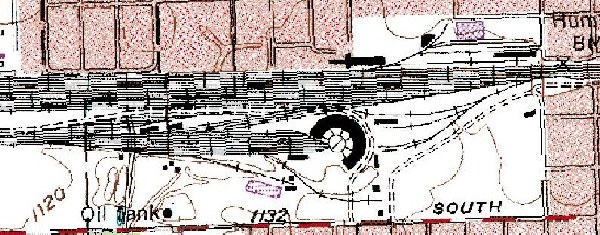
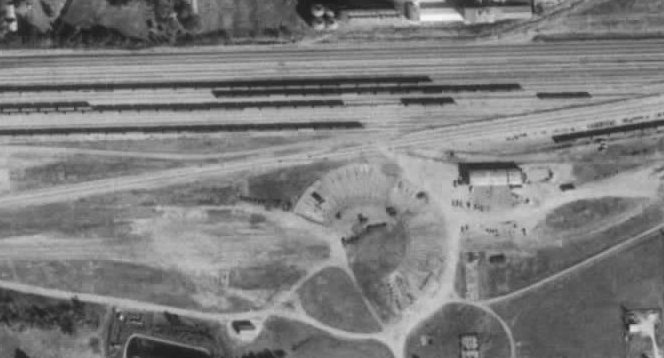

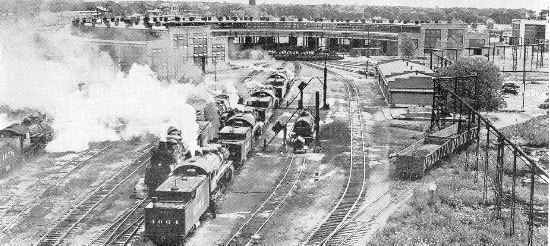
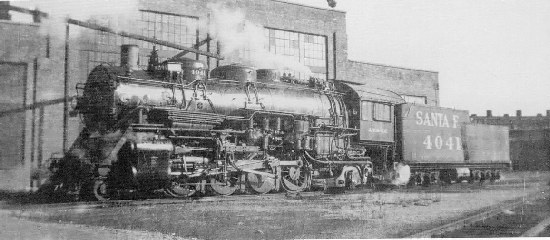
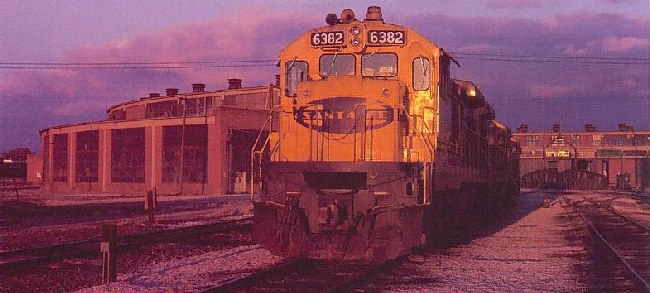
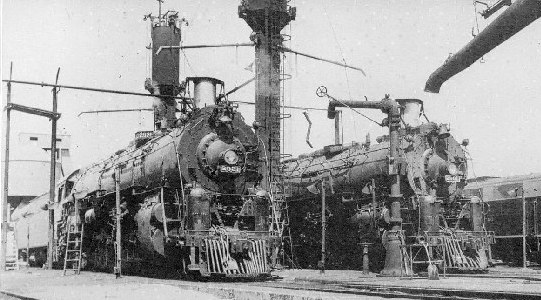
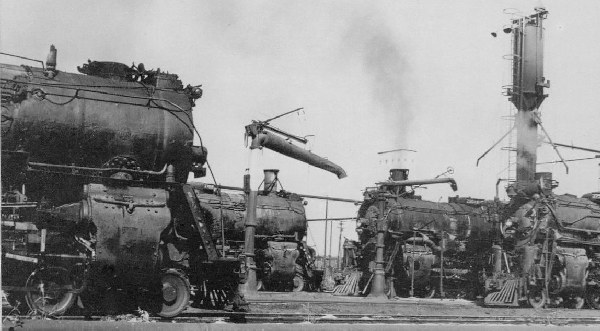
 James Burke photos.
James Burke photos.